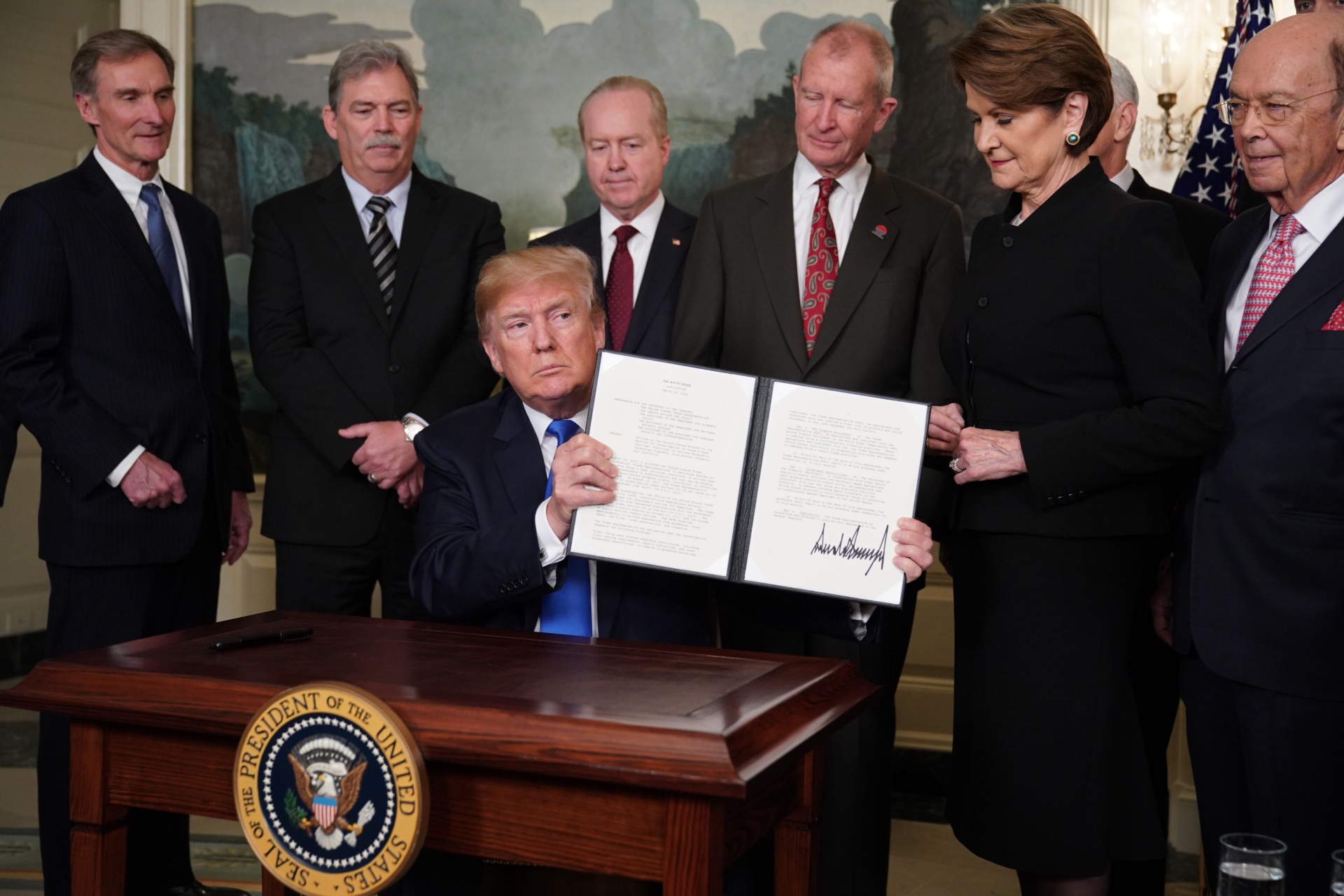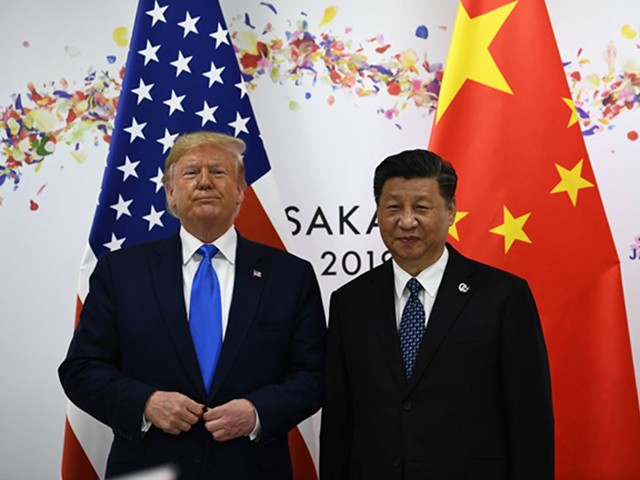The Anti-Tariff Bunk Machine Gets Cranking Again
Here we go again.
The once and possibly future President Donald Trump’s proposal to implement a tariff of ten percent on goods imported into our Republic has been met with a cantillating chorus of critiques claiming they will come at a cruel cost to consumers.
The Democrat-aligned Center for American Progress Action Fund has ginned up an analysis that it says shows the tariff would amount to an annual tax of roughly $1,500 on American families. The dire forecast creates the illusion of precision and analytical depth by estimating that households would pay $90 more for food, $90 more for pharmaceutical drugs, and $120 more for oil-related products like gasoline.
We have been down this road before. When Trump announced that he would put a tariff on imported steel and aluminum, his critics proclaimed the imminent arrival of tariff-mageddon for consumers.
Here are some of the greatest hits from five years past:
- “Trump’s trade war may soon hit consumers’ wallets and paychecks,” NBC News declared.
- “Tariffs will surely lead to higher prices for imported goods and, to a lesser extent, prices for non-imported goods that use imported materials,” the University of Pennsylvania’s business school Wharton reported.
- “Tariffs are about to hit consumers, and it won’t be pretty,” CNBC claimed.
- “Trade restrictions, by their nature, result in price increases for the goods in question. If the price of steel and aluminum goes up, manufacturers will be forced to pass those costs onto American consumers,” wrote Tori K. Whiting, the Jay Van Andel Trade Economist at the Heritage Foundation’s Roe Institute for Economic Policy Studies.
- “U.S. President Donald Trump’s steel and aluminum tariffs will boost car prices by hiking commodity costs for manufacturers, automakers have warned,” Reuters reported
That didn’t happen, as Breitbart News extensively chronicled through the years of the Trump administration. The price of new and used cars and trucks, for example, ticked up 0.25 percent from the imposition of the tariffs in March of 2018 through the onset of the pandemic in February 2020. That’s an inflation rate of around 0.12 percent per year.
“Although many big corporations reacted to the announcement of tariffs with warnings that consumers would be forced to pay higher prices, the evidence so far is that corporations have been forced to absorb the costs of tariffs rather than passing them on. Instead of squeezing the pocketbooks of American households, the tariffs are putting pressure on record-high corporate profits,” Breitbart News reported in May 2018.
The China tariffs provoked the same kind of tariff-as-a-tax fear-mongering. J.P. Morgan estimated American households would face up to $1,000 in additional costs each year from the duties imposed on goods made in China.

President Donald Trump signs trade sanctions imposing tariffs against China at the White House on March 22, 2018. (MANDEL NGAN/AFP via Getty Images)
Nothing of the sort happened. By the calculations of the Washington Post, not exactly a friend of Trump or his tariffs, the actual cost to consumers was more like $100.
“But a recent study by economists at Harvard University, the University of Chicago and the Federal Reserve Bank of Boston went a step further, examining data from two large retailers on prices of similar goods, some of which face tariffs and some that do not. The economists found a ‘quite modest’ price difference, suggesting that U.S. companies and retailers are eating a lot of the costs and making lower profits,” Heather Long of the Washington Post explained. “The price hike for affected dishes, furniture, linens, toaster ovens, towels and umbrellas was less than 1 percent, the study found. And the price for electronics only went up by 1.4 percent.”
The Big Lie That Tariffs Are a Tax on Consumers
The latest tariff-mageddon tract from Center for American Progress Action Fund heralds its litany of doleful consequences for consumers on the basis of the thinnest possible gossamer of analysis. We hesitate to summarize it because you might suspect that we were making it up or being unfair. But it really is this dumb:
The sweeping, across-the-board 10 percent tariff proposed by the Trump campaign would dramatically increase the cost of goods for families across the country. To illustrate, this analysis estimates that in 2025, Americans will import $3.2 trillion in goods. A 10 percent tariff on goods would effectively raise taxes on goods by about $300 billion, or an average of $1,700 per household in the tariff’s first year. Middle-income U.S. households—those in the 40th to 60th percentile of the income distribution—consume about 85 percent as much as the average household according to the Consumer Expenditure Surveys, which suggests a roughly $1,500 tax increase for the typical household.
That’s it. That’s the “analysis.” They simply assume that all of the tariff would be passed through to U.S. consumers, take 10 percent of the expected level of imports, and then divide it up pro rata among American households. There’s no analysis there at all.
To support the assumption that tariffs get passed through to consumers, the Center for American Progress Action Fund—let’s just call them CAPAF, for short—cites a study that found that “the price incidence of U.S. import tariffs falls largely on the United States.” But that study does not show the tariffs were paid by U.S. households. Quite the opposite.
It is, in fact, the very same study that the Washington Post cited as showing that consumers didn’t pay for Trump’s tariffs. It found that while the tariffs were passed through to importers, they were largely not passed through to retail prices. The evidence “suggests that many US retailers reduced the profit margin on their sales of the affected goods” instead of passing on the cost of the tariffs.

Officer Dan Maerzke of Maryland Transportation Authority Police watches cargo containers being moved on June 2, 2005, at Seagirt Marine Terminal in Baltimore, Maryland. (Alex Wong/Getty Images)
That’s not surprising. The “tax on consumers” scenario assumes that the market is static, that American households will meekly accept higher prices without a fight. It assumes that businesses are somehow holding back on price increases they could implement simply because they aren’t paying taxes on imports yet. In reality, anyone who has spent more than a few minutes observing businesses knows that they’re already charging the maximum price they can for every product. Imposing a tariff does not somehow make their customers more willing or able to pay higher prices.
“It is quite odd for anyone to assume that tariffs, which are just taxes, get fully passed on to consumers,” we explained in March of 2019. “Almost no one assumes this about other taxes, whether we’re talking about corporate income taxes, taxes on corporate jets, taxes on dividends, or taxes on financial transactions. To a first approximation, no one on earth believes that the Trump corporate tax cut means that consumers pay lower prices. So why would a tax hike—in the form of a tariff hike—mean they pay higher prices?”
Taxes—tariffs, income taxes, dividend taxes, or otherwise—do not set the price level in the economy. Instead, prices reflect those good old economic mainstays of supply and demand, which means that tariffs cannot raise consumer prices generally unless they also raise incomes or force Americans to save less. The additional spending power has to come from somewhere. If tariffs were to raise the prices of imports without raising incomes, the prices of other things would have to fall by the very same amount. There would be no additional tax on households. The $1,500 burden dreamt up by CAPAF is economically impossible.
Tariffs Are Trade Policy Tools
What’s more, this perspective oversimplifies the complex dance of international trade, where tariffs can serve as a strategic tool to negotiate better terms with trading partners and encourage domestic production. Tariffs are not merely about imposing costs. They are about reshaping the landscape of global commerce to favor American interests and workers.

Chinese Communist Party Leader Xi Jinping (right) and President Donald Trump attend their bilateral meeting on the sidelines of the G20 Summit in Osaka on June 29, 2019. (Brendan Smialowski/Getty Images)
Supply chains can shift, alternatives emerge, and consumer purchases adjust, mitigating the long-term impact of import tariffs. The doom-and-gloom assertion of a $1,500 annual hit to families assumes a static world where neither consumers nor companies adjust to new realities, a stance that underestimates the dynamism of the American economy.
Let’s not forget that the proposed tariff is not an end in itself but a means to an end. It’s a bargaining chip in the high stakes game of international trade, a lever to pry open markets that have long been closed to American goods through unfair trade practices. To those wringing their hands over the prospect of a trade war: what’s the use of a poker face if you’re not willing to raise the stakes now and then?
The tariff is not a harbinger of economic doom or consumer inflation but a potential catalyst for negotiation, innovation, and rebirth in sectors of the American economy long given up for dead.





Comments are closed.